Wentworth Villa: Restoring a Heritage Home
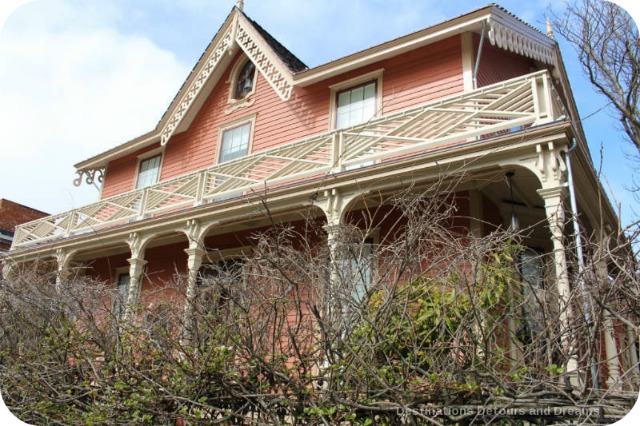
A tour of the heritage Wentworth Villa in Victoria, British Columbia showcases history and restoration efforts as it prepares to become the Architectural Heritage Museum
Updated August 2019: Wentworth Villa is now open a few days a week. Housed in a restored heritage home, it is a museum focused on the architectural heritage of Victoria, British Columbia. I attended a tour of the building in 2016 as it was being prepared to house the architectural museum. The tour focused on the restoration work. That restoration work is visible in the museum today and part of the what the museum exhibit.
Wentworth Villa is a heritage home in Victoria, British Columbia built in 1863. The building underwent extensive restoration and structural work from 2012 to 2016. During my tour, I learned a bit more about the architecture and the history of Victoria and gained more respect for the painstaking work of restoration.
Renovation means making something look like new. However, restoration means returning a space to its original appearance. It means retaining the maximum number of original building materials, doing repairs with minimal changes to the original building fabric, and, if possible, using the same methods as were originally used.
Wentworth Villa was owned by only two families before it was acquired in 2012. Its history did not include extensive remodeling as is often the case with homes of this era, which have served various purposes throughout their lifetime. Many parts of the building survived intact. Doors, windows, floors, fireplaces, siding, bargeboards, and the wrap-around veranda are original, although the balustrade for the veranda was lost. Changes made to the building included a new foundation and upgrades to meet modern building codes. A new foundation was built around the original foundation, which was substandard by modern definition. Building code upgrades included seismic provisions to withstand moderate earthquakes and the installation of fire sprinklers and a fire stairway.
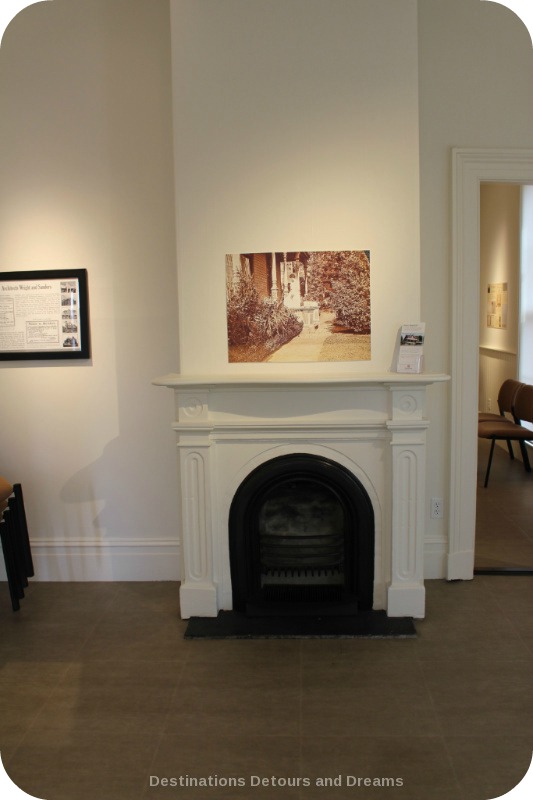
The Ella family were the first owners of Wentworth Villa. Henry B. Ella arrived at Fort Victoria in 1847 as Second Mate of the Hudson Bay Company. Martha Beeton Cheney arrived with her aunt and uncle in 1852. The two married in 1856. They moved into the newly-built Wentworth Villa in 1863. Very few houses were built outside the Fort at that time. Wentworth Villa sat on a hill surrounded by Garry Oak trees, a good twenty-minute walk from the city core. When it was built, it was the largest residential building in Victoria.
It is believed the house was designed by architects Wright and Sanders, although no official surviving documentation links them to the house. The design of the house suggests the involvement of an architect. John Wright and his brother-in-law George Sanders formed the first architectural firm in Victoria in 1861. In March of 1863, a call went out from their firm requesting separate tenders for masonry, plaster, plumbing, tin, and painting work for a “suburban residence.” The residence was likely Wentworth Villa. (Note: In 1867, Wright and Sanders relocated to San Francisco, where they were very successful with around 100 significant commissions. Most of their buildings were destroyed in the 1906 earthquake and fire.)
The house was built in Carpenter Gothic style, a North American style stemming from Gothic Revival architecture. The term refers to the use of wood as a building material. At the time Wentworth Villa was built, the original redwoods and windows would have been shipped from California.
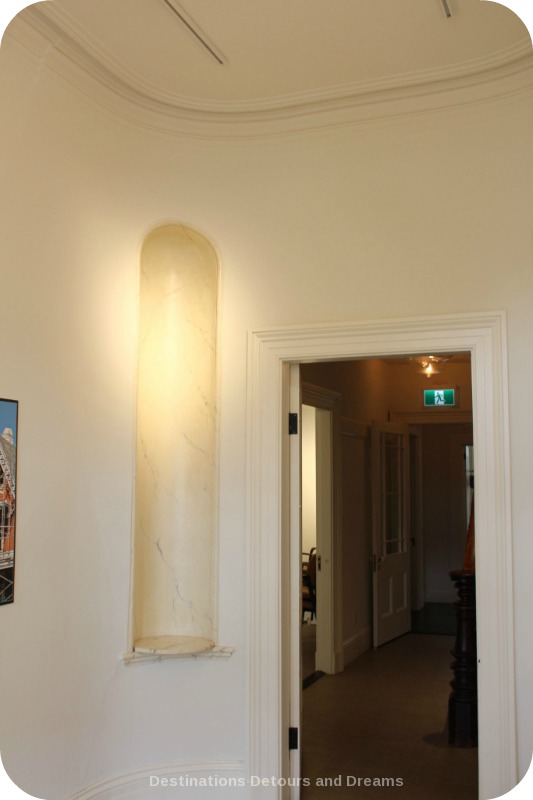
Henry and Martha Ella had seven children. Henry died in 1873. When Martha Ella died in 1911, three of her children continued to live in the house. In 1922, the City of Victoria took possession of the house for unpaid taxes. Sons Henry and Fred Ella continued to live in the house for another eighteen years as tenants of the City.
In 1940, Faith Grant bought the house. She and her husband George “G.C.” had operated an antique store business next door since 1929. In 1956, they added an extension at the back of Wentworth Villa for living accommodation behind the store. The addition did not affect the integrity of the original building. After Faith died in 1985, her grandchildren continued to operate Faith Grant The Connoisseurs Shop Ltd. In April 2012, they moved the business to Victoria’s Oak Bay neighbourhood.
Restorers are detectives, using what they can see and examine in the workmanship, information about practices and materials of the times, old plans if available, and old photographs, diary entries and newspaper articles to determine what the original state of the building was. Ben Schweitzer, co-manager of the restoration work and managing director of the Foundation operating Wentworth Villa, led the tour I took and provided great insight into the detective work and restoration efforts.
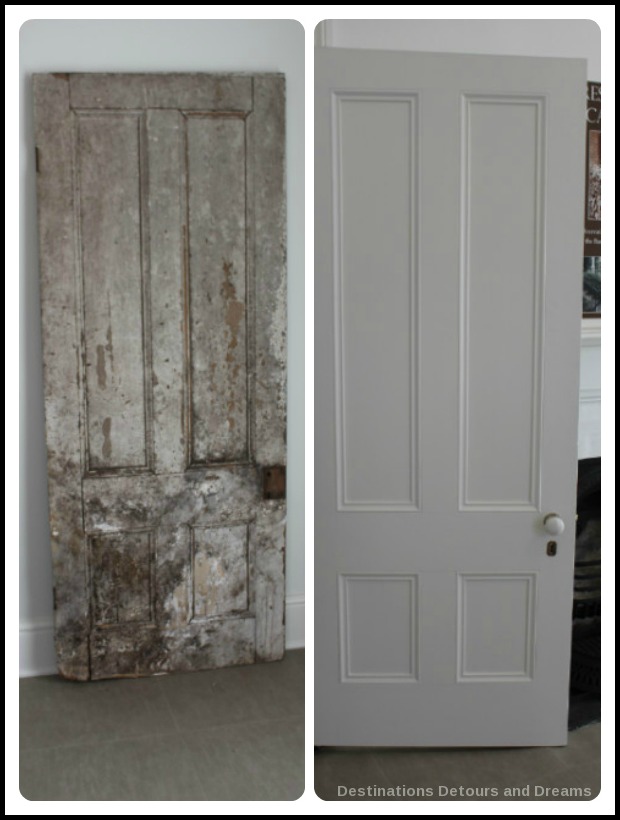
Doors were one area requiring sleuthing work in the restoration of Wentworth Villa. Over 150 years, doors had been rotated, replaced, rebuilt and sometimes embellished. The original redwood doors became more diverse over time. However, the solid entrance door looked exactly like the door in Ella’s photo albums. Yet, it turned out to be a recent replacement. The restorers found the original door in the rear of the house
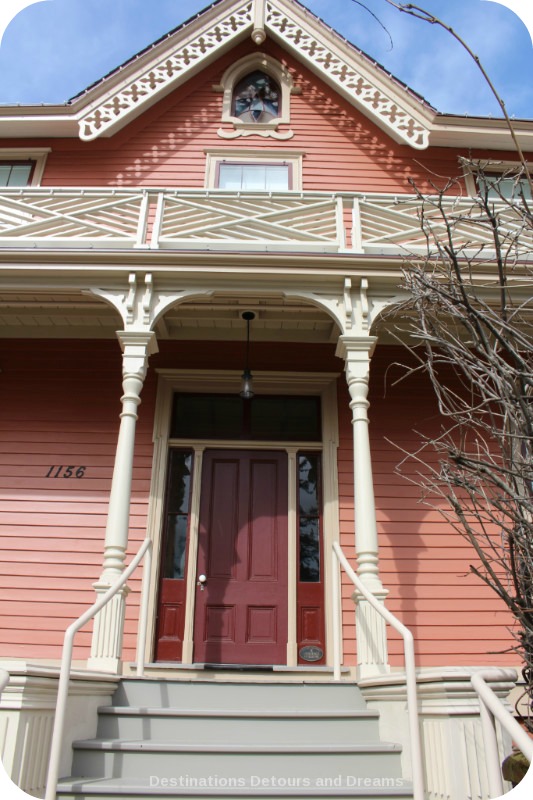
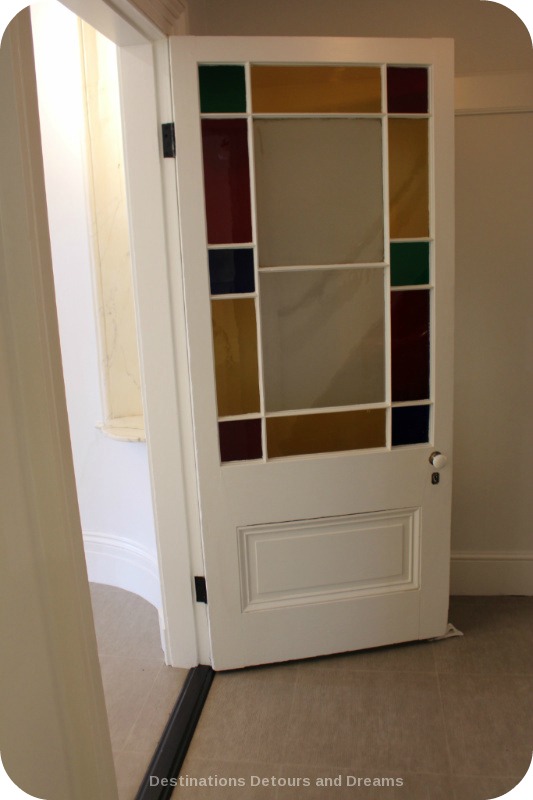
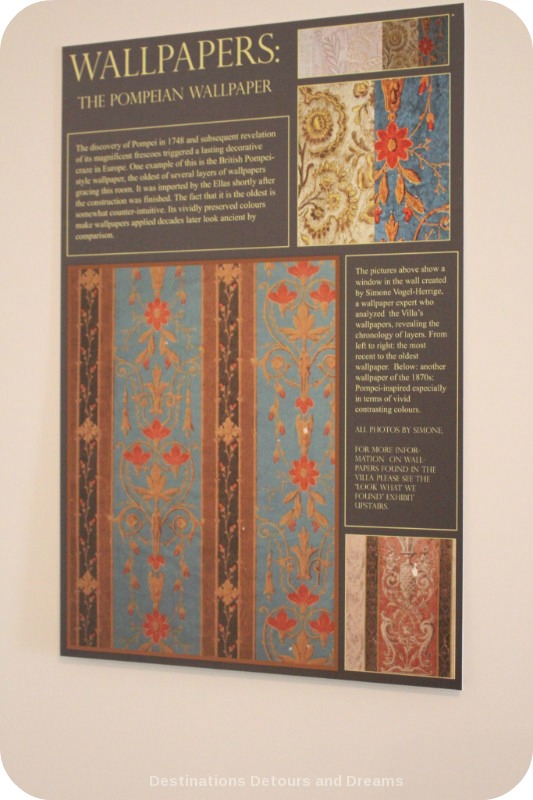
Simone Vogel-Herrige, a wallpaper expert, analyzed the wallpapers used in the Villa over time. The rooms in the building will remain painted off-white, suitable for the museum setting, but there are plans to restore two rooms with original period wallpaper when funding becomes available.
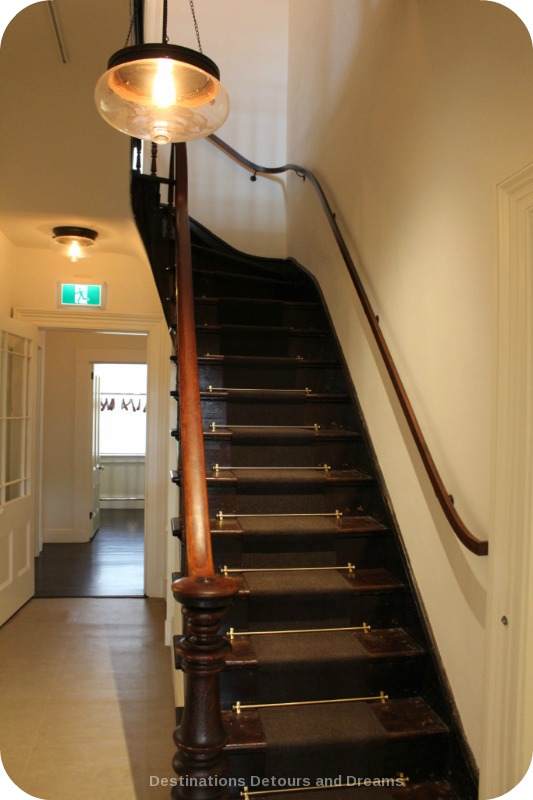
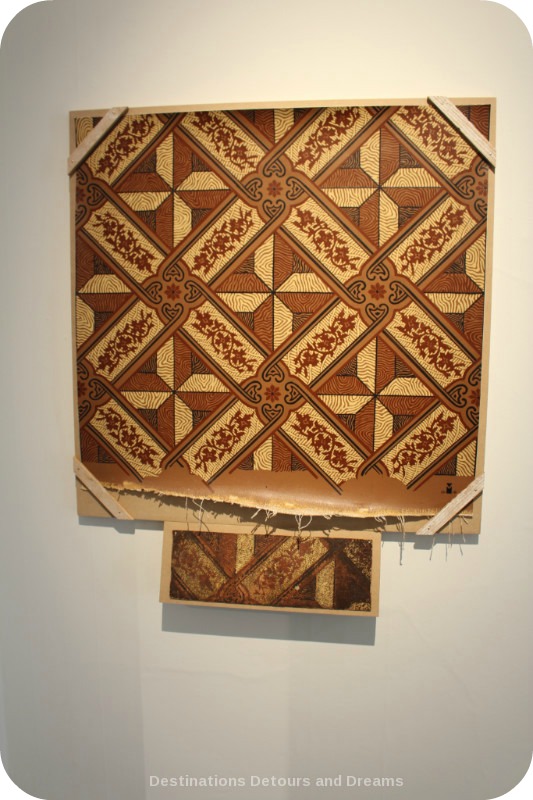
The front hallway floors contained a decorative pattern. Other flooring was plain wood. The original wood floors have been cleaned and are currently covered in protective vinyl. The vinyl will be removed when the Museum officially opens and the wood flooring will be displayed. Carpeted walking paths will be laid throughout the Museum.
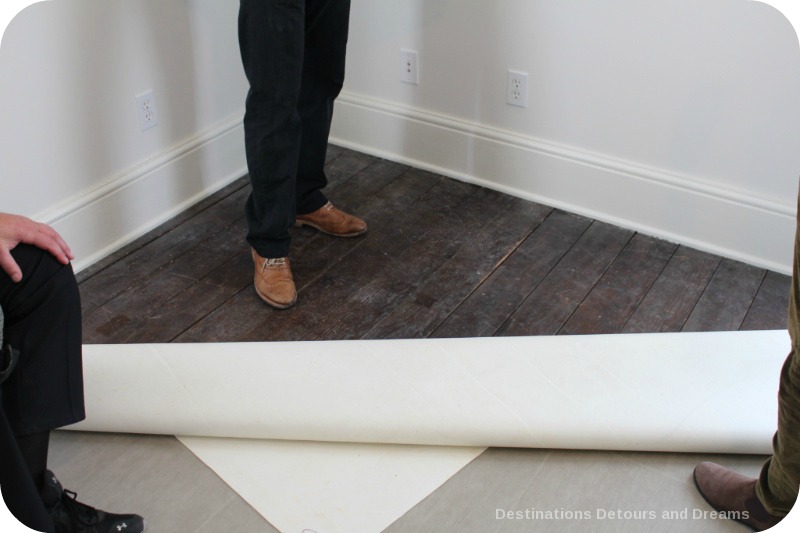
The work done to restore the house has been meticulous. There were many examples of the care taken during the tour, but the one which resonated the most with me was the installation of the sprinkler system. The second-floor sprinkler system was installed via the attic, but installation of the first-floor system posed challenges to maintaining the integrity of the original building design. Instead of sacrificing the original plaster and associated ceiling papers, floor boards on the second level were lifted. All boards were cleaned and labelled. Measurements were taken to document the exact location at every floor joist. Even the spaces between the boards were measured. After the sprinkler installation was complete, the boards were restored to the original locations. The original clipped head square nails were used whenever possible. Ben told us the accuracy of the re-installation is within 1/32nd of an inch.
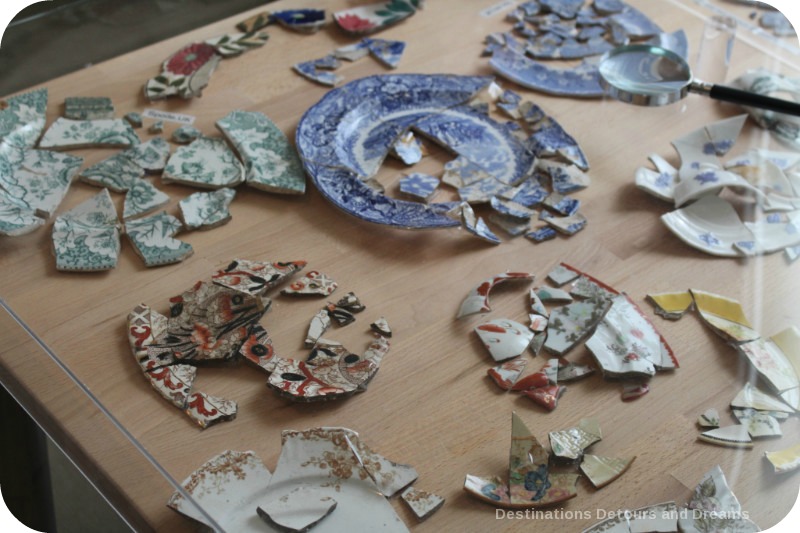
The story of how Wentworth Villa came to be the home of the Architectural Heritage Museum is interesting. In 2011, Wentworth Villa was sold to a developer who planned to convert the building, with additions, into suites. In order to preserve the house, Stefan and Magda Opalski convinced the developer to sell the house to them in 2012. The Opalskis emigrated to Canada from Poland in 1979. The lived a year in Montreal and then in Ottawa until 2006, when they moved to Victoria. They were disappointed to see many of the grand old houses disappearing and saw buying Wentworth Villa as their chance to do something about that and give back to Canada. They have invested a significant amount of money into the building and the restoration. Wentworth Villa is currently operated by the Pacific North-West Heritage Foundation, a registered charity. The house is leased to the Foundation at no cost and will be donated to the Foundation when the Museum becomes self-sustainable.
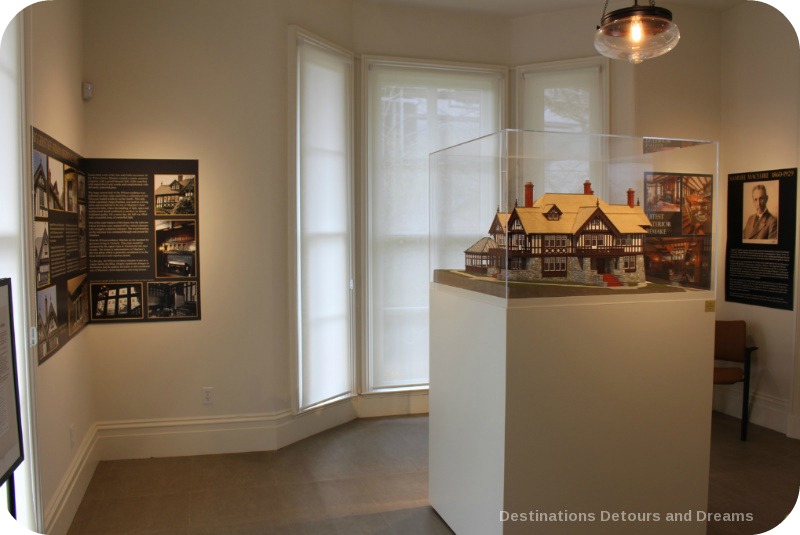
The first architectural exhibit is the Biggerstaff Wilson residence. Biggerstaff Wilson was the son of a well-known English-born clothier. He commissioned Samuel Maclure to build a house in 1905. Samuel Maclure was the foremost domestic architect in British Columbia at the time. The Biggerstaff Wilson house represents Maclure at the height of his medieval Arts and Crafts period.
The second exhibit is the Muirhead House. The Muirhead House in the Victoria West neighbourhood is seen as a good example of the transition between Victorian and Edwardian versions of the Queen Anne style of architecture. It was built in 1903 to 1904. After 1950, it became a rooming house and eventually became quite run-down. In 1976, Jim Lee bought and began restoration. He received a Hallmark Society award for restoration in 1987. In 1991, it was declared a National Historic Site, one of the few privately owned homes to be so recognized in Canada.
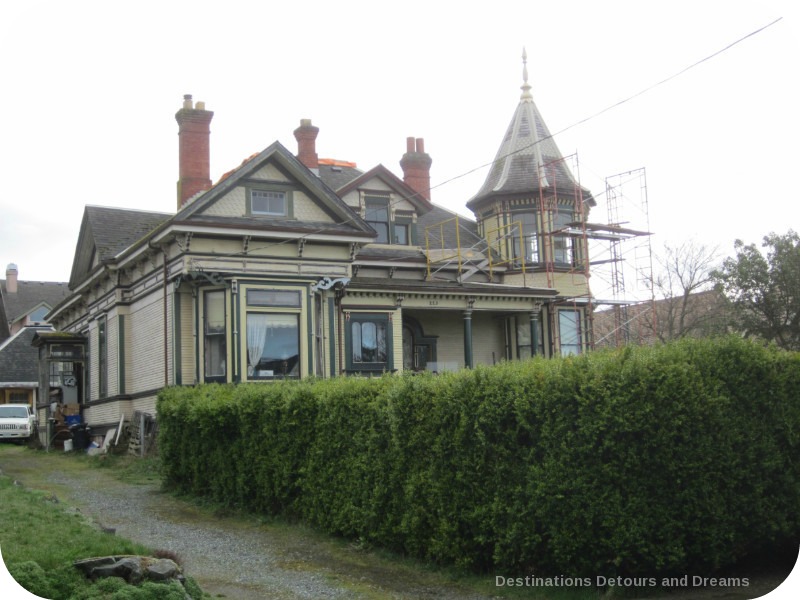
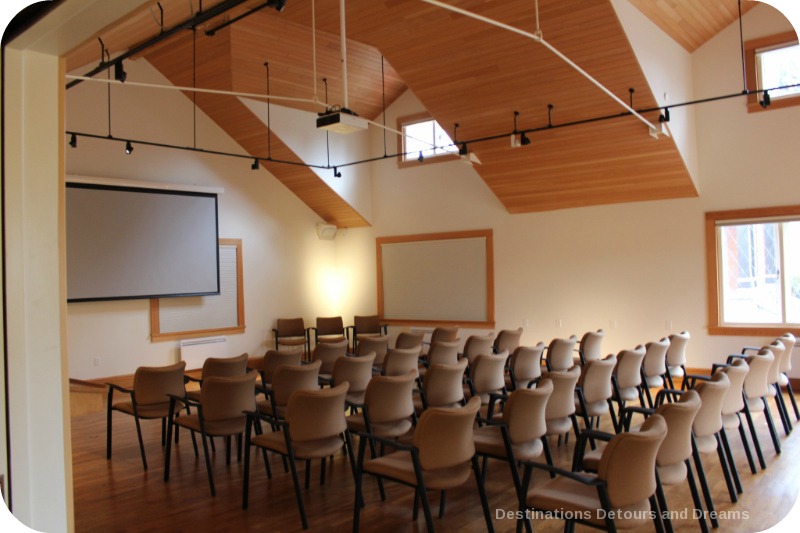
In addition to its exhibits, Wentworth Villa stages events, such as concerts and talks, in its “big Hall”.
PIN IT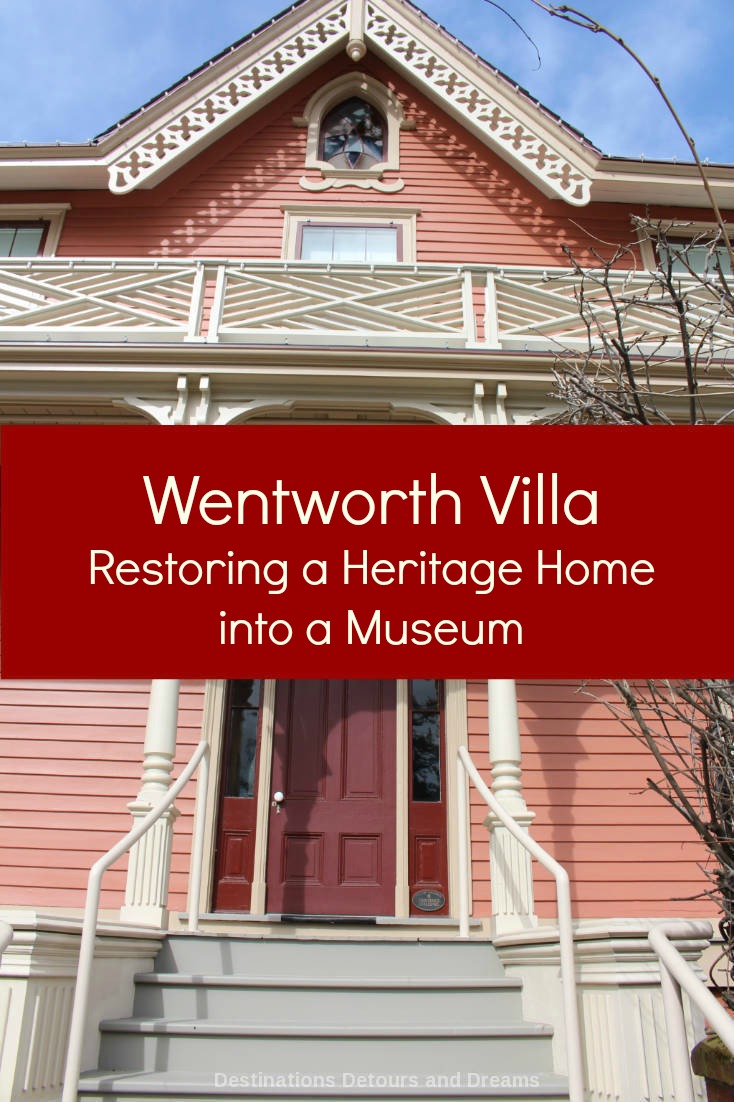
If you enjoyed this post, sign up for Destinations Detours and Dreams monthly e-newsletter. Get behind the scenes information and sneak peeks ahead in addition to a recap of the month’s posts.

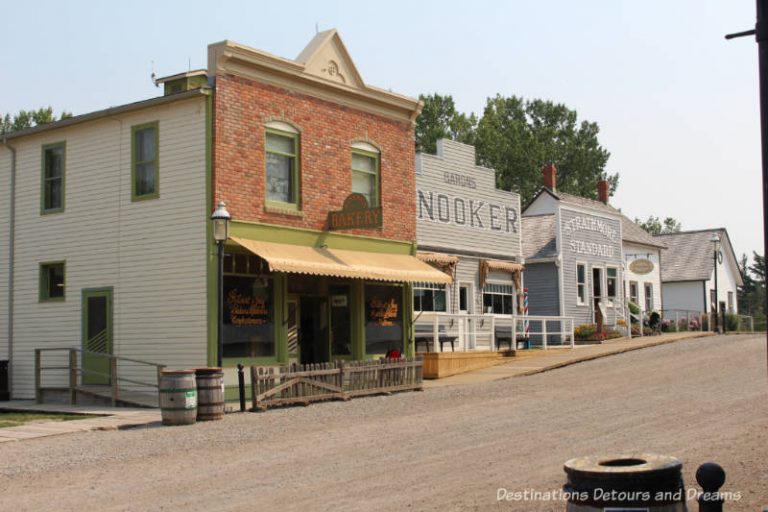
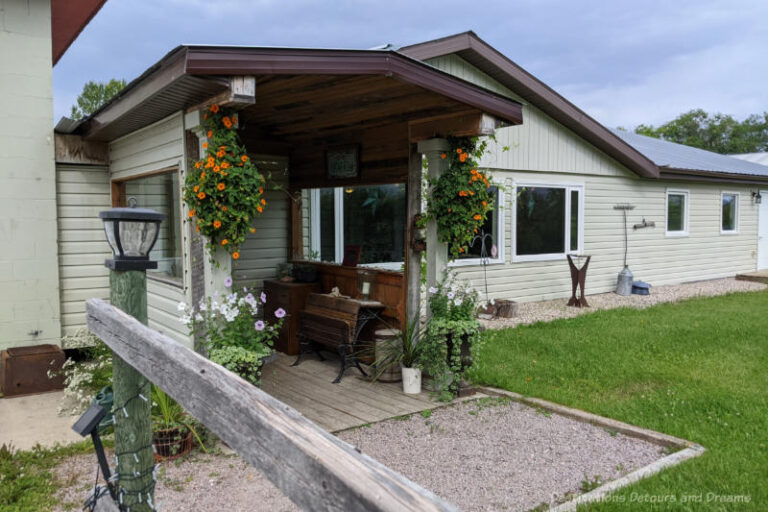
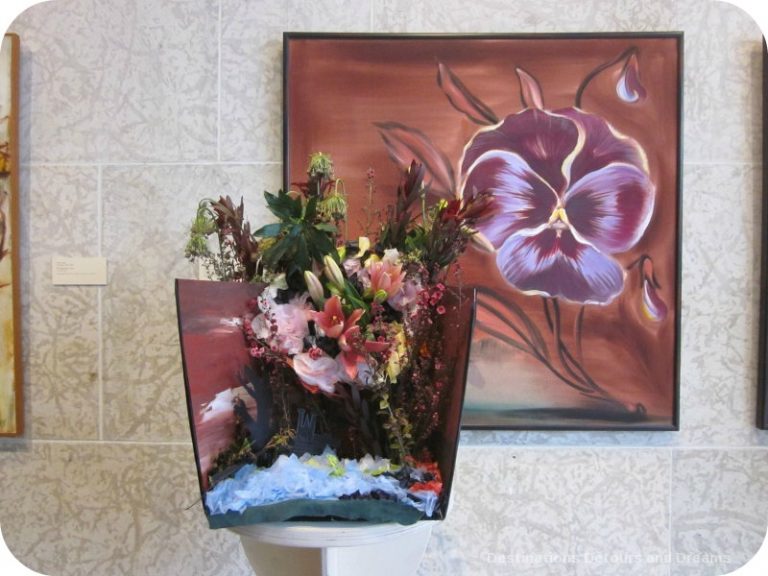
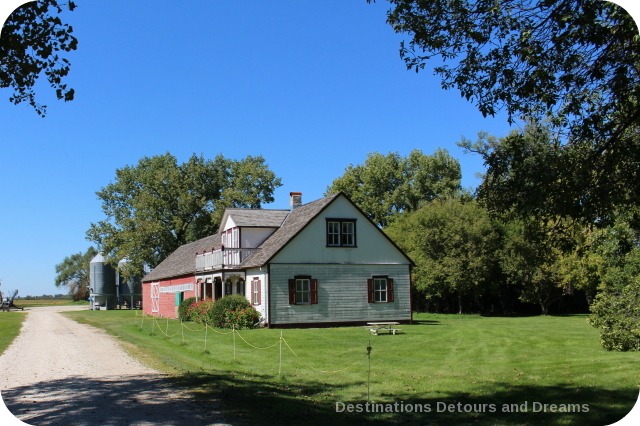

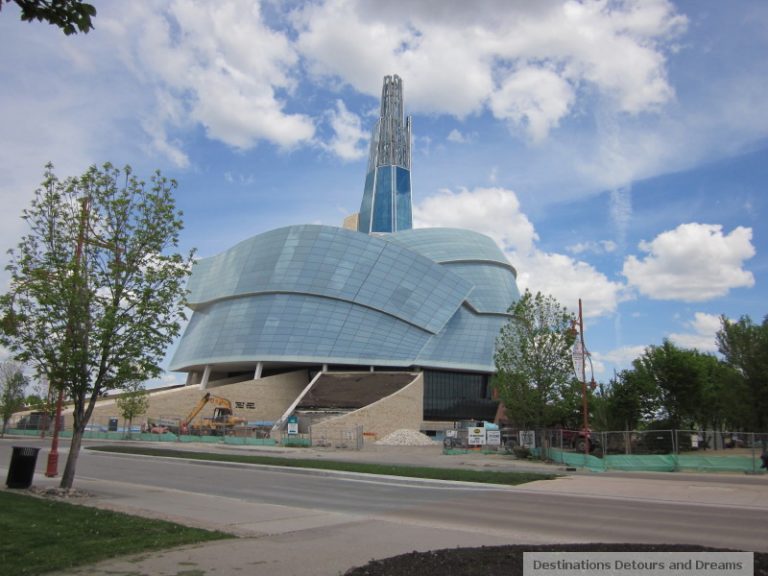
Very interesting…nice for you to have an opportunity to hear about the Wentworth restoration from someone integral to the work.
Linda, it was great having someone who had been such a big part of the restoration take us through the house. He knew so many details.
The home has some beautiful features. The mahogany staircase caught my eye. You’ll have to go back after they do the wallpaper so you can show us what it looks like.
Ken, I would like to go back when they’ve done a room or two as it would have been and when more architectural displays have been created.
This house is beautiful. It looks so modern for such an old house. I admire the organizations that take on these historical projects and make them available to the public. Great article with many interesting facts. Thank you for sharing.
Carol, the house does have a lot of clean, modern lines. It wasn’t as ornate as some older houses, but it is certainly well-preserved.
Wow, you really gain an appreciation for the amount of work involved in restoring a home, when you take a look at the before and after of that door! Wentworth Villa looks like a beautiful heritage home – how wonderful its been so well restored
Michele, I certainly gained a deeper appreciation for what goes into a restoration. I think it will change how I look at other heritage buildings when I go through them.
Wentworth Villa sounds fabulous. I love the look of it. I’d like to think in another life I could possibly be involved in building restoration or renovation. It’s always appealed to me.
Jeri, I love the thought of working to restore something. It must be very satisfying. Although I am detail-oriented I suspect I don’t have the patience for the work.
Every time I read one of your posts Donna, you give me another reason to visit Canada. I love these old houses and take a chance to tour them wherever we are as they provide insightful glimpses into how people lived long ago. (In fact, it’s easy to picture myself moving right in!) It’s interesting to learn the differences between restoring and renovating and to see the amount of research and attention to detail that goes into preserving the old houses for future generations. Anita
Anita, there is certainly a lot of research and attention to detail involved. It’s like figuring out a mystery.
I was just a bit confused about the inclusion of the Biggerstalf Wilson Residence and Muirhead House in the entire discussion of Wentworth Villa. Will they be exhibited at the Architectural Heritage Museum?
Yes Carol, those two homes I mentioned will be exhibited in the Museum. The Biggerstaff Wilson Residence is the first exhibit. It is completed and occupied a room in the house. Work on the exhibit about the Muirhead House was in progress when I toured Wentworth Villa.
It seems they’ve done a great job with Wentworth Villa. Restoration is a lengthy and costly process and it’s great that some organizations take interest in preserving these old homes.
Anda, it is good there are organization interested in preserving these old homes and willing to finance the effort.
I can’t even imagine the work, determination and cost of such a restoration. Just updating our home in Greece has called for a bit of will-power. . .I couldn’t do this – but I sure do appreciate it!
Jackie, I don’t think I could do this either, but I sure appreciate the work of others.
What a wonderful job they did with the restoration of Wentworth Villa. I have an interior design background, so I know how much work and how tedious it is to try and keep the same historic details in tack.
Patti, I am awed by the work involved to retain historic details in restoration and I don’t have your background. I’m sure I’d be even more impressed if I did.
Great house and I like that it’s being changed into a museum and yet kept the original integrity of the architecture. I like restoration more than renovation, for sure.
RoseMary, They’ve been very careful to maintain integrity.
What a beautiful restoration. I wish they did this in Vancouver rather than tearing down all the beautiful old houses to build more condo buildings!
Nathalie, it can be quite expensive to restore old buildings.I understand that it isn’t always feasible and new housing options are needed, but it would be nice if we could have a balance.
Thx for the insightful post about Wentworth Villa, Donna. It’s amazing how much work goes into the restoration of these magnificent properties.
Doreen, the amount of work and the care taken is amazing. Every time I visit a place where someone is doing or has done restoration, I’m blown away.
Wow! Painstaking is right! You certainly did a thorough job of explaining what meticulous detail goes into a complete restoration. Those who do this work have to have a lot of patience and love what they do! I will now have a greater appreciation of historic homes like this.
Debbra, and I only highlighted a couple of the examples of painstaking work. Ben covered more on the tour and I’m sure he had more stories he didn’t have time to share during the tour.
It’s great to see historic homes being restored with such respect for the past, rather than renovated into something else entirely! Some of the features you show in Wentworth villa remind me of some of the “Painted Ladies” in San Francisco.
Rachel, I’ve only seen the “Painted ladies” in photographs, but have read that one of the architectural styles of influence was Carpenter Gothic,which is the style of Wentworth villa.